What is CBD Isolate? - Overview
CBD is everywhere, and people are adding it to everything from their morning coffee to their hand cream.
As CBD continues to rise in popularity, there’s a dizzying number of ways to take it. Terms like full-spectrum and isolate are thrown around with little explanation. And then, there’s the question about the best way to take CBD. Should you eat it, vape it, swallow it in a pill, or put it on your skin?
This guide will explain what CBD isolate is and answer all your questions, including whether it will show up on a drug test and the difference between it and full spectrum oil.
Chapters
What Is CBD Isolate?
Benefits of CBD Isolate
What Plant Does CBD Come From?
How Is CBD Isolate Extracted?
Types of CBD
Other Forms of CBD
How Do You Use CBD Isolate?
Does CBD Isolate Show Up On a Drug Test?
Cannabinoids Present in Cannabis
Ailments that CBD Is Reported to Help With
Any Side-effects With CBD Isolate?
How To Determine CBD Dosage
What to Watch Out For When Buying CBD Isolate
Where to Buy CBD Isolate
Summary
What is CBD Isolate?
The revelation that CBD can be used for a variety of therapeutic and medicinal purposes is a relatively new discovery. It wasn’t until 1963 that Dr. Raphael Mechoulam discovered that individual cannabinoids had different effects on the body. In more recent decades, scientists learned that CBD, short for cannabidiol, (and THC) had the greatest potential for health benefits.
Therefore, several hemp extractors elected to isolate the CBD molecule and offer it by itself in a pure form. A pure CBD isolate won’t have any other cannabinoids like CBG, CBN, THC, THCA, etc.
When you search for CBD, you’ll find two main types of CBD products: full-spectrum CBD oil and CBD isolate (aka THC-free).
CBD Isolate
When you hear the term CBD isolate, you can be confident that all the other cannabinoids and compounds have been removed, and you’re getting at least 99% pure CBD.
CBD isolate comes in either a fine, white crystalline powder or a slab that can be broken down. In the production process, the cannabidiol molecule is separated from the rest of the molecules in the hemp extract.
Full-spectrum CBD
Full-spectrum CBD is also referred to as full-spectrum CBD extract, whole plant CBD extract, or full spectrum hemp extract.
Full-spectrum includes all of the cannabinoids that are found naturally in the hemp plant plus all of the flavonoids, terpenes, fatty acids and other beneficial compounds.
One of the key reasons people prefer CBD isolate is that it should contain no THC. This is important for people who are hyper sensitive to THC, or for people who are tested regularly for drugs, whether it’s for a job application, their current career, or they need to be THC free for another reason.
There are several full-spectrum CBD products that are marketed without THC, but the truth is that these products may contain trace amounts of THC, which is enough to show up on a drug test.
Benefits of CBD Isolate
THC Free
Less expensive
You can measure exact doses
Can be used for DIY CBD products
No taste
Easy and convenient
What Plant Does CBD Come From?
CBD, short for Cannabidiol, comes from the flowering portion of the cannabis plant. This miracle plant is part of the Cannabaceae family, which includes the following plant species:
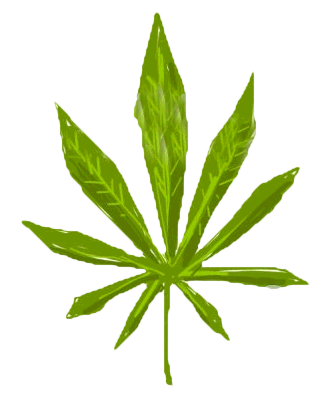
This species grows the tallest, up to nearly 20 feet. This variety has a reputation for boosting energy levels, creativity, and concentration, though effects tend to differ based on the individual.
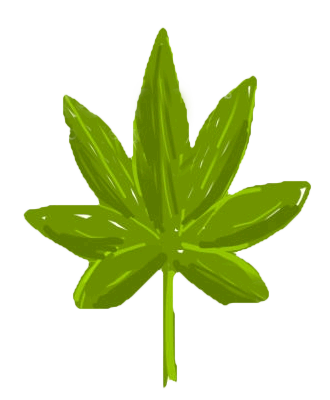
Indica plants are shorter and bushier with smaller leaves. They resemble a Christmas tree. These strains are the most popular for medical use, as they’re associated with soothing muscles, relieving pain, and helping with insomnia.
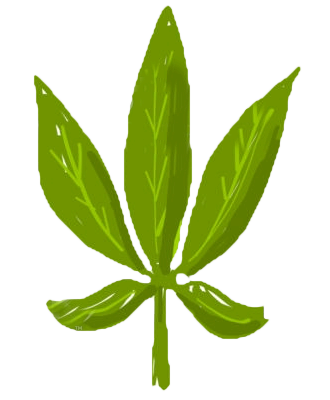
These plants are less common and tend to grow well in Europe, where they thrive in lower light conditions. Cannabis ruderalis is naturally low in THC, making it an ideal plant for industrial uses like clothing and textiles.
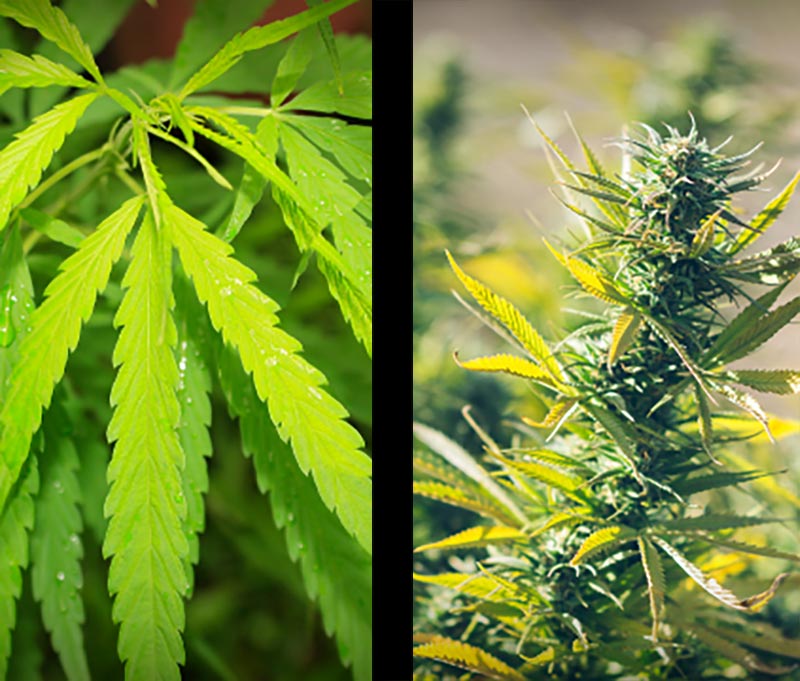
Because there are different types of cannabis, some with psychoactive THC, and others without, there has been confusion between the various terms, and they’re often mistakenly used.
For example, hemp and marijuana are sometimes used interchangeably, even though they are different. Hemp is not marijuana. Instead, hemp is a variety of cannabis that contains little to no THC (less than 0.3%), while marijuana is a type of cannabis plant that contains high amounts of THC (Tetrahydrocannabinol). Both hemp and marijuana plants can both produce CBD. The primary difference is in the THC content.
Hemp has been cultivated for over 9,000 years for a variety of industrial purposes. It is likely that several of the most important documents in human history were crafted on hemp paper. During World War II, hemp production became more widespread, but it became illegal due to misinformation and confusion. The media portrayed hemp as as marijuana and prohibition was born. Propaganda films like Reefer Madness portrayed marijuana as a dangerous drug, and it led to the criminalization of all types of cannabis, including hemp.
CBD can be extracted from both hemp and marijuana plants. However, while hemp-derived CBD is currently legal in all 50 states, marijuana-derived CBD is only permitted in states that have legalized marijuana.
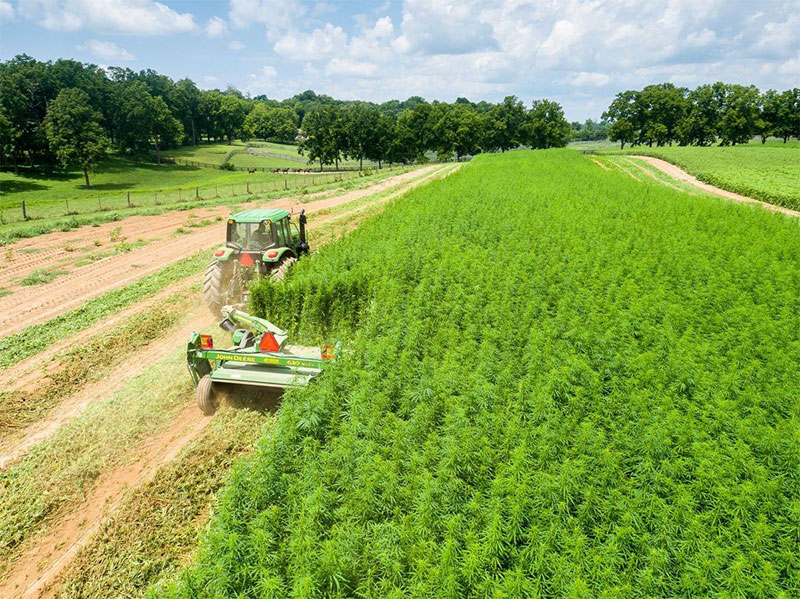
How is CBD Isolate Extracted?
The first steps in making CBD isolate are the same as extracting full-spectrum CBD. After the initial extraction, there are variations in how the CBD is isolated and removed, and the process will differ based on the manufacturer.
Here is the most common step-by-step process:
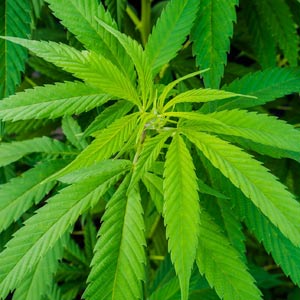 1
1Step 1
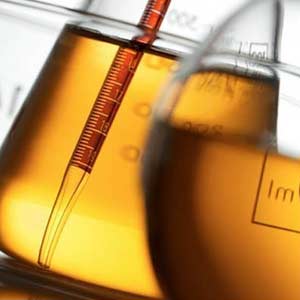 2
2Step 2
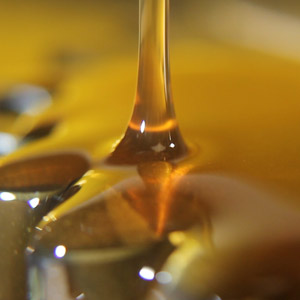 3
3Step 3
 4
4Step 4
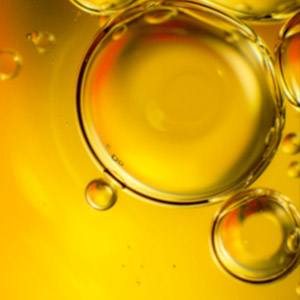 5
5Step 5
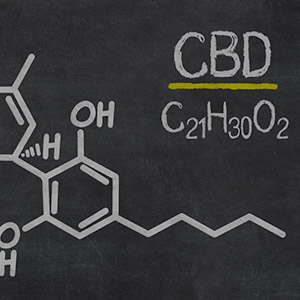 6
6Step 6
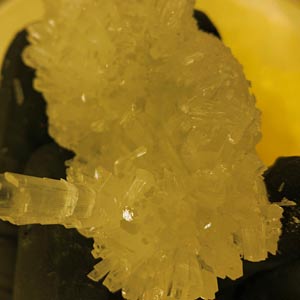 7
7Step 7
The large crystals are then melted down to purge them of any residual solvents left over from the isolation process. High quality CBD isolate should have very little or no residual solvents in the final product.
Alternative Extraction Processes
Chromatography is another type of chemical extraction process where cannabinoids are separated from each other using specific pressure and temperature settings. Chromatography is used to create full spectrum oil with less than 0.3% THC, also known as Broad Spectrum. THC is washed away leaving a broad spectrum CBD Oil. This process creates a beautiful CBD extract, but it still needs further refinement to isolate the CBD.
Types of CBD
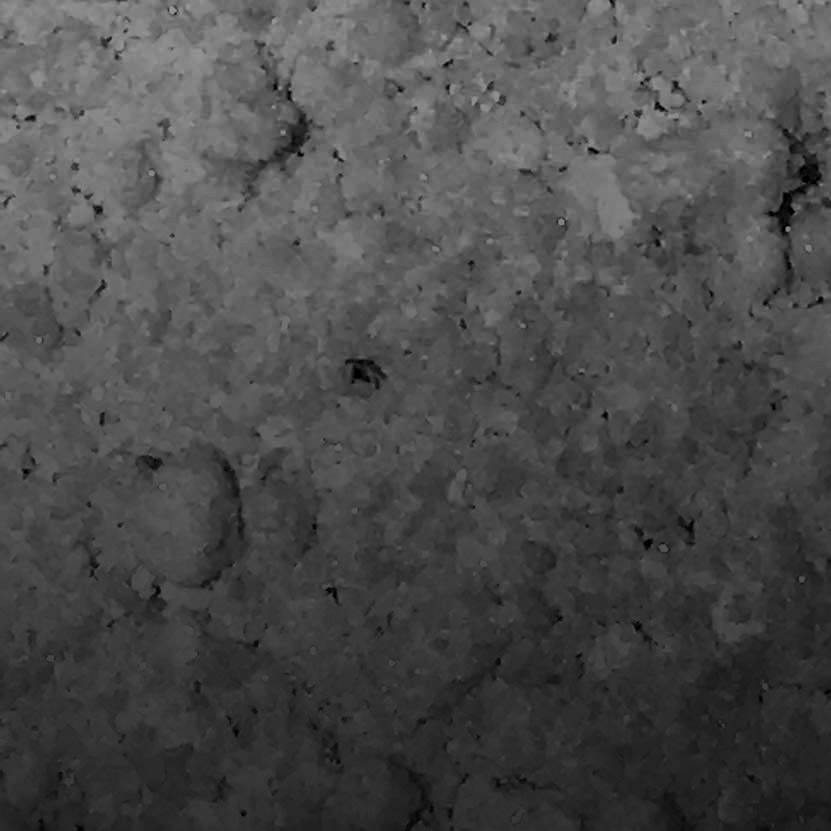
In powder form, CBD isolate looks like a white powder. It tends to resemble powdered sugar, though it can also come in a larger crystallized form. It is incredibly versatile, and it contains no taste or odor (assuming it’s been manufactured correctly). There may be a slight residual cherry flavor, but it should be subtle, if detectable at all. Having CBD isolate in powder form makes it easier to dose as well as mix with food and drinks. Instead of paying for overpriced concoctions, you can buy CBD isolate powder by itself and create topicals, edibles, and beverages.
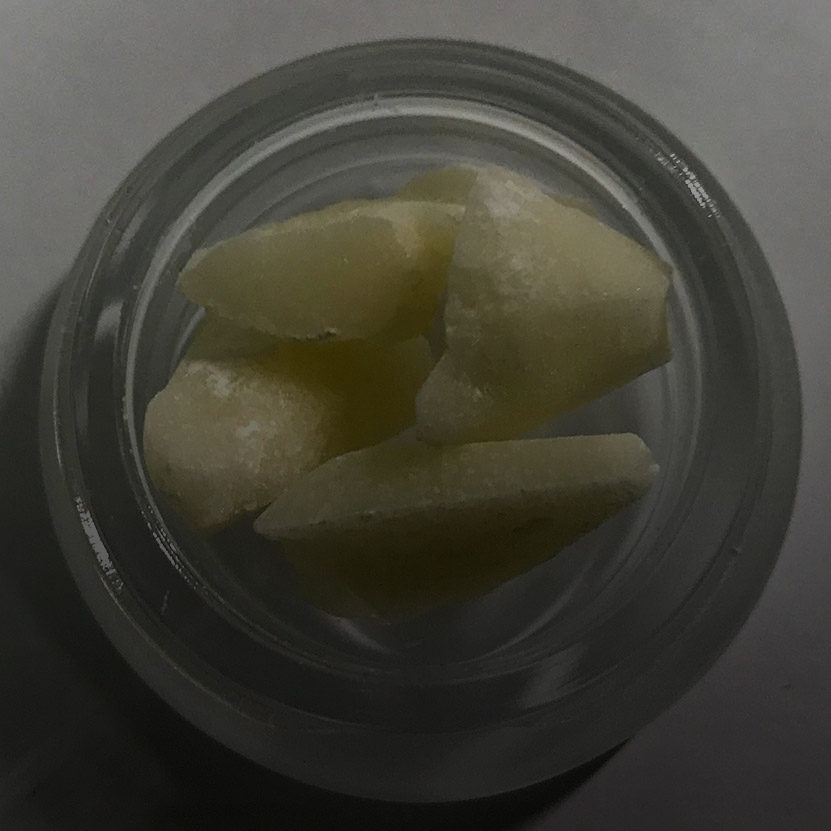
Slabs are ideal for people who want to vape or dab their CBD. These consumption methods allow users to inhale pure CBD vapor without any other chemicals or contaminants. Another advantage of using CBD isolate slab for vaping is that it can enter the bloodstream more quickly. Instead of digesting or applying CBD to the skin, the CBD goes directly to your circulatory system, allowing you to feel the effects and experience the benefits sooner. CBD isolate slabs can also be used for cooking and edibles, and they can be combined and smoked with herbs if desired.
Other Types of CBD Isolate
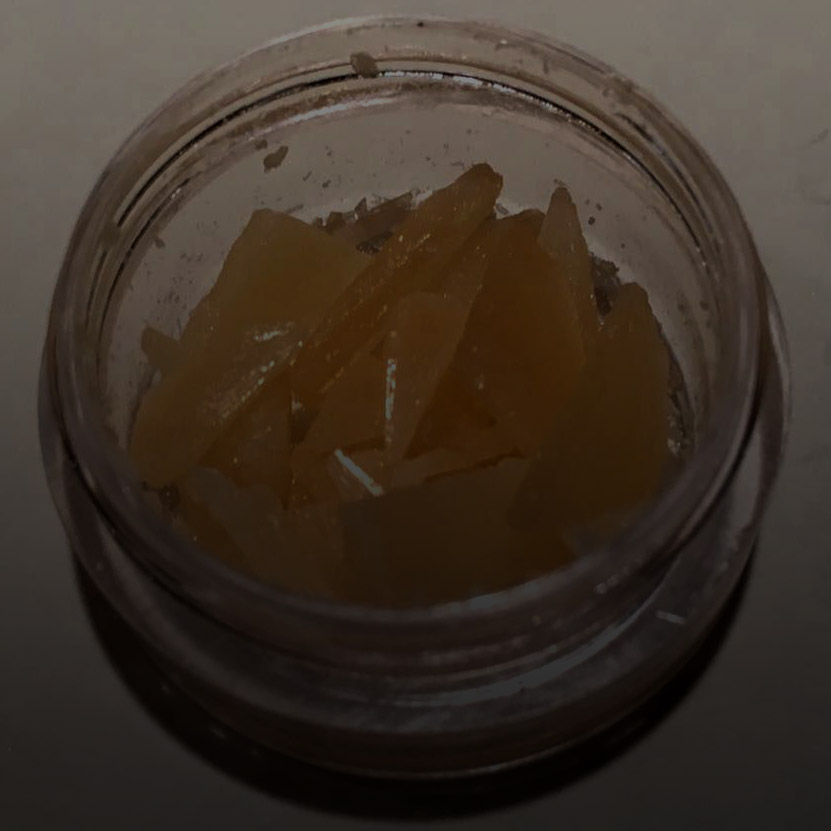
Though it has the same chemical makeup and concentration of other CBD isolates, the key difference is the texture. It’s hard and brittle, and it can “shatter” when handled. It resembles CBD wax visually, but you’ll be able to tell the difference when you touch it, and it falls apart in your hands.
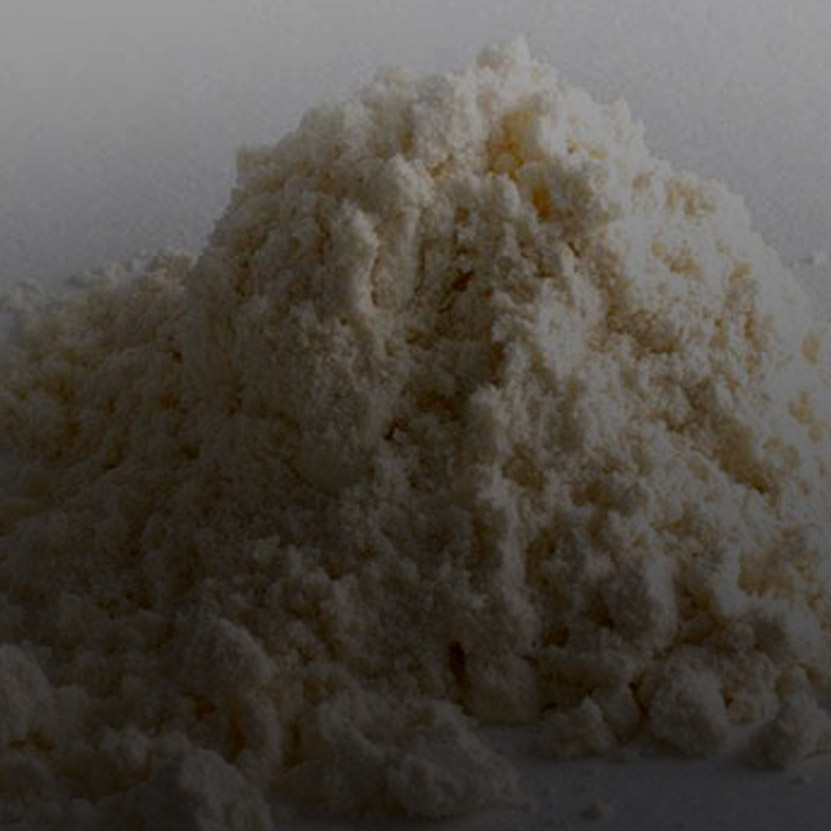
As an oil, CBD doesn't mix well with water. The reason this is relevant to a discussion of CBD is that our bodies are made of 60% water. Several CBD companies are racing to make water soluble CBD, and making claims about increased bioavailability. Increased bioavailability does not mean it is better for you or offers you more. CBD that is more bioavailable can have a much quicker onset compared to other types of cbd..
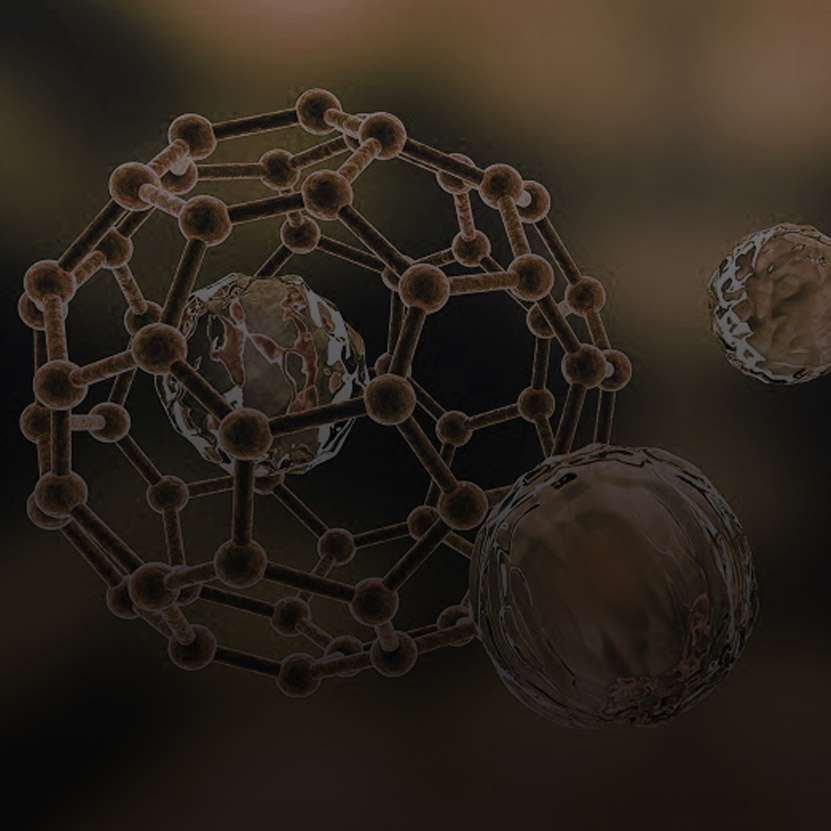
To allow for CBD to be water-soluble, and therefore bioavailable, scientists use nanotechnology. The process involves breaking down the CBD using soundwaves. When broken up, the particles are a fraction of their original size. The reduced particle size make them more available to the human body.
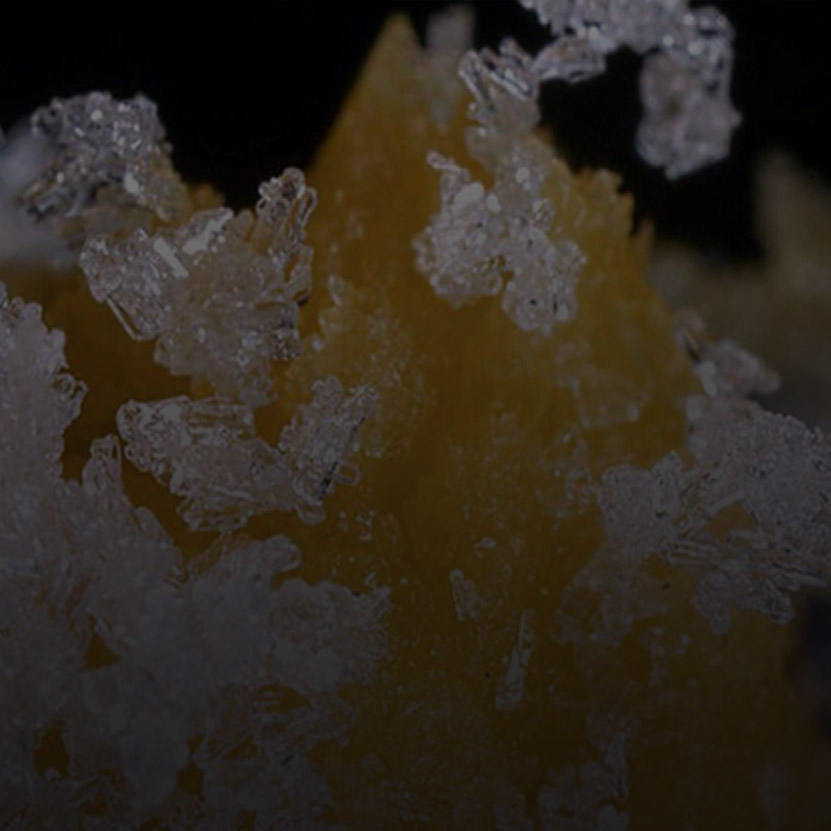
Terpenes are volatile molecules found in plants, fruits and vegetables and are responsible for smell and taste. They’re considered adaptive in nature. For example, the terpenes that the plants produce protect them from predators. In addition to providing scents, terpenes also have therapeutic benefits, similar to cannabinoids. For example, limonene is a terpene found in cannabis, fruit rinds, grapefruit, and rosemary. It has a citrus smell and is associated with stress relief and improved mood. It also has anti-inflammatory and anti-fungal properties.
Types of Terpenes
- Synthetic – Synthetic terpenes are made in a lab, not found naturally in the plant. You can think of synthesized terpenes as adding strawberry flavoring to a piece of candy instead of eating a real strawberry.
- Plant based – These terpenes are botanically derived from plants other than the cannabis plant. Examples include linalool from lavender, myrcene from cloves, and alpha-pinene from pine needles.
- Cannabis – Of the 20,000 terpenes in existence, approximately 100 are found in cannabis. There’s also overlap, and some of the terpenes in cannabis are found in other plants as well. Myrcene, mentioned above, is one of the primary terpenes in cannabis, and also found in mangos.
CBD + Terpenes
Terpenes give plants their distinct smell and taste. By combining these molecules with CBD, producers have been able to create an effect associated with cannabinoids while developing new flavor profiles. Some of the more creative terpene profiles include:
Maui Wowie
Visit Hawaii without the expensive airfare. This fragrant terpene profile recreates the legendary strain with a distinct pineapple aroma.
Lemon Haze
It’s hard not to feel happy when you smell a lemon. Bring back that citrus nostalgia with a concentration of terpinolene, which has a distinct woody aroma with plenty of citrus tones.
Blueberry Kush
This terpene profile combines sweet berry notes with a hint of earth. Typically, Blueberry Kush is associated with high THC-content, but you’ll be able to avoid THC completely by opting for the CBD isolate version.
Girl Scout Cookies
If you’re craving a sweet snack that won’t sabotage your diet, opt for the Girl Scout Cookies CBD isolate. The terpenes added include linalool, myrcene, pinene, limonene, and caryophyllene. Its combination of sweet and earthy with a hint of pungency can satisfy any craving.
Blue Dream
This terpene profile is nearly identical to Girl Scout Cookies, though it tends to receive higher reviews than GSC
Other Forms of CBD
Depending on how CBD is processed and how many steps have been taken in its refinement, there can be various forms of cannabidiol. Here are the most common you’ll see as you search for CBD to buy:
Crude
CBD Crude is created at the first stage of the extraction process. Crude is often bought in bulk at wholesale prices.
Distillate
CBD distillate is created from crude. Distillate is a beautiful golden, honey like substance that contains a full spectrum of cannabinoids and several terpenes. CBD distillate is less refined than CBD isolate. CBD distillate can be refined into THC free distillate or isolate.
Crystals
CBD crystals (isolate) are considered the purest form of CBD available. You’ll often see a purity rating ranging from 90% to 99%, and this indicates the concentration of pure cannabidiol. The lower number indicates the presence of impurities like terpenes and other cannabinoids. The higher the number, the purer the CBD is.
Winterized
Winterized CBD has gone through an alcohol wash, which is a step in the extraction process that further purifies CBD. In this step, plant fat and waxes are removed from the crude oil. The term winterization comes from the fact that the CBD oil is frozen for 24 hours, which allows for the separation of the fat and waxes.
How Do You Use CBD Isolate?
There are a variety of “delivery methods” that allow you to get the full benefits of CBD. Whether you want to inhale them, put them on your skin, or ingest them, you have countless options.
Cooking
When you cook with CBD, your body will digest the CBD which can then be absorbed into the body. This way of consumption is a good way to get general CBD support, but not always the best delivery method for acute symptoms.
Sublingual
Consuming CBD sublingually means putting the powder directly underneath your tongue. To experience the full effects, you should hold the powder in place for about one minute. By placing it under your tongue, your mucous membranes will absorb the CBD and deliver it directly to your bloodstream. This method bypasses the digestion process.
Topicals
You can also apply CBD directly to your skin. There are a variety of DIY methods that allow you to use CBD isolate to create your own topical products, such as lotions, balms, salves, creams, and moisturizers. The advantage of a topical is that you can spot treat an area for localized relief. Topicals can also help treat inflammation, dryness, irritation, or blemishes.
In addition to applying topicals directly to the skin, bath bombs and soap are two great products that allow for topical delivery.
Capsules
For maximum convenience and dosage control, put your CBD isolate in a capsule and swallow it. No cooking or DIY experience required!
Edibles
Most people tend to think of edibles as synonymous with pot brownies, but the edible industry has expanded dramatically since those early days. When you have CBD isolate on hand, you can create recipes where you control the concentration and dosing. Today, you can buy CBD gummies, jelly beans, chocolates, and more. If you make your own, you won’t pay nearly as much as if you purchased a branded product.
Smoking
One of the most effective ways to experience the benefits of CBD is by smoking it. Users can feel the effects of smoking CBD within a few minutes. Smoking increases bioavailability, allowing more of the beneficial compounds to be absorbed into your bloodstream. However, if you have concerns about the effect that smoking has on your lungs, it’s important to weigh the benefits of immediate CBD absorption versus the potential for respiratory damage.
Vaporizing
Vaping CBD also provides a fast and efficient CBD delivery method. It’s considered safer than smoking since vaping is a smokeless process. CBD isolate is ideal for vaping because it vaporizes instantly when using a dab rig or a proper vape pen.
Does CBD Isolate Show up on a Drug Test?
In general, consumers of CBD isolate should not test positive for a drug test because CBD isolate is supposed to be 99% pure CBD with zero THC. However, there is a chance that very small amounts of THC could still be present in the CBD isolate and therefore could be detectable by a drug test. Furthermore, there is a chance that a drug test could result in a false positive. It is best to consult your employer before starting any CBD or hemp supplement. People subject to drug testing should not use full spectrum CBD oil, as this oil does contain legal amounts of THC.
Cannabinoids Present in Cannabis
Though CBD is currently getting the most media attention, there are over 100 known cannabinoids found in cannabis. Further, new research has found that cannabinoids aren’t unique to the cannabis plant. They’re also found in a variety of other plant species, including echinacea, the electric daisy, Japanese Liverwort, Helichrysum, and cacao.
As a side note, the “good feeling” that comes from eating chocolate is due to a cannabinoid present in cacao that’s similar to THC.
Some of the most common cannabinoids used for medicina purposes include:
- Cannabidiol (CBD) – This cannabinoid is the most abundant, contributing up to 40% of cannabis resin in hemp. It’s also been found that it can balance out the effects of THC. What this means is that when high levels of both THC and CBD are consumed, the psychoactive effects of THC may be less than if someone consumed the same amount of THC without any CBD.
- Cannabigerol (CBG) – Like CBD, this cannabinoid is also non-psychoactive. Early research suggests that CBG obstructs GABA uptake in the brain, which can potentially help with anxiety, mood, and sleep disorders. It was also studied in the 1990s as a glaucoma treatment because it’s been shown to reduce intraocular pressure.
- Cannabinol (CBN) – Because of its sedative properties, CBN is considered to be “mildly psychoactive.” It was the first cannabinoid to be isolated and was thought to be the main reason for the psychoactive effects of marijuana before they discovered THC.
- Cannabicyclol (CBL) – So far, CBL is one of the least studied cannabinoids, so not much is known about it yet. Scientists have learned that it has no psychoactive properties and have yet to determine its exact benefit. For now, they’re saying that it’s part of the “entourage effect,” which maintains that taking full-spectrum cannabis can yield superior results due to the synergies of taking all of the cannabinoids present in the plant.
- Tetrahydrocannabinolic Acid (THCA) – Found in raw cannabis, THCA does not produce the intoxicating effects of THC. However, when the cannabis plant dries, THCA converts to THC. The process is expedited when the plant is exposed to heat. Therefore, people can obtain the same effects of THC by smoking or vaporizing THCA.
- Cannabidiolic Acid (CBDA) – CBDA has been shown to contribute to the anti-inflammatory effects of consuming cannabis products. CBDA is found in raw CO2 hemp extract.
- Cannabichromene (CBC) – You’ll often find CBC in topical cannabis products. Not only does it have the potential to relieve pain and reduce inflammation, researchers believe it can promote bone growth while inhibiting tumor and cancer cell growth.
- Tetrahydrocannabinol (THC) – Also known as delta-9-tetrahydrocannabinol, THC creates the “euphoric high” that marijuana is best known for. It affects mood, motor function, emotion, perception, and cognition. THC can provide anxiety relief in small doses but could also promote anxiety if too much is consumed.
Ailments that CBD Is Reported to Help With
Studies have revealed a wide array of benefits associated with CBD use. However, manufacturers are not allowed (by the FDA) to make any claims that their products are meant to cure or treat any diseases. Currently, the only FDA-approved CBD product on the market for medical use is a prescription drug to treat epilepsy.
Still, there are some studies and countless anecdotes about CBD helping with the following:
Pain Relief
The use of cannabis for pain relief dates back nearly 5,000 years. Now that CBD has been identified as a cannabinoid responsible for therapeutic effects, companies are coming out of the woodwork to fulfill market demand.
Reduce Anxiety and Depression
These conditions are widespread and becoming increasingly common in children. Taking prescription drugs can lead to a whole new crop of problems. However, evidence shows that CBD can help regulate serotonin in the body while also aiding in sleep, resulting in a reduction in anxiety and depression.
Reduce Cancer-related Symptoms
Patients undergoing chemotherapy and radiation treatment report feeling nauseous and having zero appetite. CBD-administered products can help increase appetite and aid in digestion. There’s also promising research showing that CBD may be able to reduce cancer symptoms and even potentially fight cancer.
Improve Skin
Because CBD can help with inflammation and acne is an inflammatory process, it makes sense that both topical and ingested CBD can improve skin conditions.
Improve Neurological Conditions
CBD is currently being researched to help with conditions like multiple sclerosis, epilepsy and Parkinson’s disease, and Alzheimer’s. Preliminary studies suggest improved quality of life in patients and their conditions seemed to stabilize when using CBD.
Improved Cardiovascular Health
Because stress and anxiety are associated with high blood pressure, some people taking CBD have experienced lowered blood pressure and therefore better cardiovascular health. There could also be antioxidants present in CBD that bolster the health and longevity of cells in this region of the body.
The reason CBD has been identified to help with so many ailments and why consumers are so optimistic has to do with how CBD (and other cannabinoids) interacts with the body’s endocannabinoid system (ECS). It’s believed that cannabinoids return various systems in the body to homeostasis, meaning that cannabis products can identify where the body is struggling and help target those areas.
Any Side-effects Associated With CBD Isolate?
CBD is generally well-tolerated, but there are some things that can go wrong if you’re not careful. Potential side effects include:
- Dry mouth
- Diarrhea
- Drowsiness and fatigue
- Reduced appetite
If you’re taking any prescription medications, check with your doctor for any potential drug interactions.
Another thing to watch out for is the presence of waxes in CBD if you plan on vaping or smoking. It’s believed that the waxes can build up in the lungs over time and lead to complications. By purchasing 99% or greater CBD isolate, you can be reasonably certain that those waxes have been removed.
How to Determine CBD Dosage
Because this product category is so new, no standard dosages have been established yet by the FDA or any other regulatory bodies.
The good news is that with CBD isolate, you have total control over your dosing. When you’re new to CBD, it’s smart to start with an average does and then go up or down from there. Alternatively, you could start with a very small dose and increase it when you feel comfortable.
Typically, experts recommend starting at a dose of 5 to 10 mgs up to twice per day. This is a typically standard dose. In some products, especially tinctures, you can get doses as small as 1 to 3 mg. You can start with a few drops each day and continue adding if you have no ill effects or fail to experience anything positive.
But again, there is no “perfect” dose that’s been established. CBD intake is a highly individualized process.
What to Watch out for When Buying CBD
The booming CBD market has been referred to as the “green rush,” and there are plenty of unscrupulous businesses eager to take your money.
It’s important to find a reputable company that can produce third-party lab test results. By having these results, you’ll know exactly what you’re consuming and what to expect. Check labels very carefully and look for the following:
- The concentration of CBD in each serving or package.
- Third-party lab testing (and viewable results) to ensure that what’s on the label is accurate.
- The country or region where the hemp was grown and processed. The company’s website should mention that all products were manufactured to a high standard and with responsible practices.
Where To Buy CBD Isolate
CBD Isolate for Sale
If you’re interested in buying CBD isolate for personal use, the most comprehensive source is Buy CBD Oil Online. In addition to supplying powder, slabs, and terpene-infused crystals, they also have a range of ready-made products from a variety of top-notch brands, including Charlotte’s Web™, Bluebird Botanicals™, and Best Life Hemp™.
If you’re a pet owner, you’ll be pleased to see an array of options, ranging from CBD tinctures to treats and chews.
CBD Isolate Wholesale
If you have a favorite brand and you want to buy in bulk (either for personal use or to resell), then it pays to go direct to the manufacturer. BuyCBDOilOnline for example, can sell you CBD isolate in quantities ranging from 100 grams to multiple kilograms.
Summary
The passage of the 2018 Farm Bill expanded hemps legal status, making it more widely available. As more companies clamor to introduce their products, it can mean even more confusion and misinformation to the general public. By knowing what products like CBD isolate are and what to look for when you buy them, you’ll have the best chance of making an informed decision.
